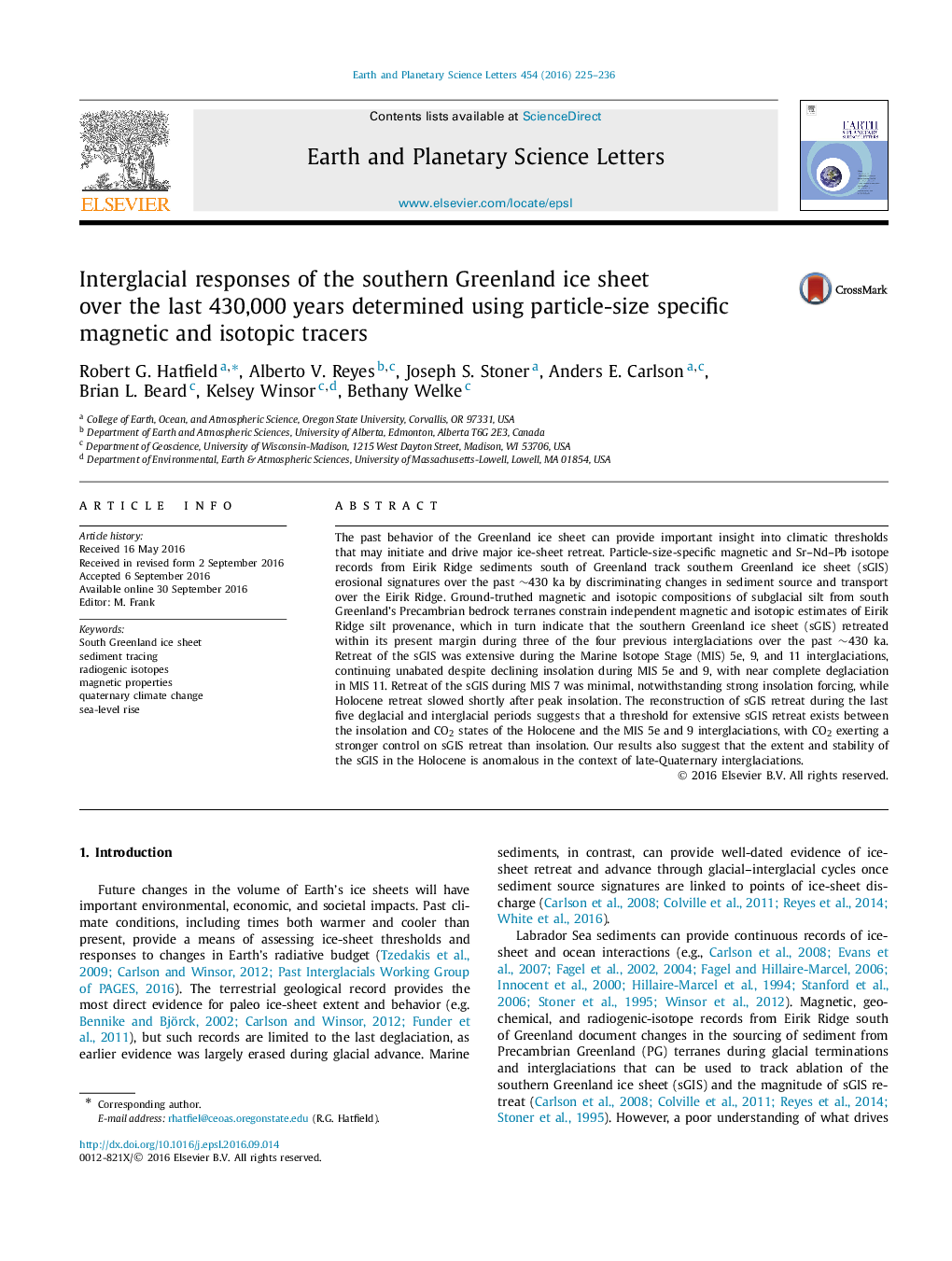| کد مقاله | کد نشریه | سال انتشار | مقاله انگلیسی | نسخه تمام متن |
|---|---|---|---|---|
| 6427198 | 1634702 | 2016 | 12 صفحه PDF | دانلود رایگان |
- Silt-size magnetic and radiogenic properties track sGIS behavior since MIS 12.
- Significant retreat of the sGIS in MIS 5e, 9, and 11, muted response in MIS 7.
- Threshold for substantial sGIS retreat lies between the Holocene and MIS 5e and MIS 9.
- CO2 is an important control on the sGIS's response to climate forcing.
- The Holocene extent of the sGIS is anomalous in a late Quaternary context.
The past behavior of the Greenland ice sheet can provide important insight into climatic thresholds that may initiate and drive major ice-sheet retreat. Particle-size-specific magnetic and Sr-Nd-Pb isotope records from Eirik Ridge sediments south of Greenland track southern Greenland ice sheet (sGIS) erosional signatures over the past â¼430 ka by discriminating changes in sediment source and transport over the Eirik Ridge. Ground-truthed magnetic and isotopic compositions of subglacial silt from south Greenland's Precambrian bedrock terranes constrain independent magnetic and isotopic estimates of Eirik Ridge silt provenance, which in turn indicate that the southern Greenland ice sheet (sGIS) retreated within its present margin during three of the four previous interglaciations over the past â¼430 ka. Retreat of the sGIS was extensive during the Marine Isotope Stage (MIS) 5e, 9, and 11 interglaciations, continuing unabated despite declining insolation during MIS 5e and 9, with near complete deglaciation in MIS 11. Retreat of the sGIS during MIS 7 was minimal, notwithstanding strong insolation forcing, while Holocene retreat slowed shortly after peak insolation. The reconstruction of sGIS retreat during the last five deglacial and interglacial periods suggests that a threshold for extensive sGIS retreat exists between the insolation and CO2 states of the Holocene and the MIS 5e and 9 interglaciations, with CO2 exerting a stronger control on sGIS retreat than insolation. Our results also suggest that the extent and stability of the sGIS in the Holocene is anomalous in the context of late-Quaternary interglaciations.
Journal: Earth and Planetary Science Letters - Volume 454, 15 November 2016, Pages 225-236
